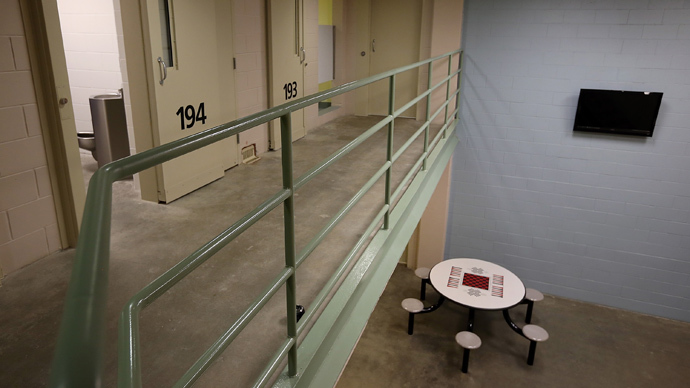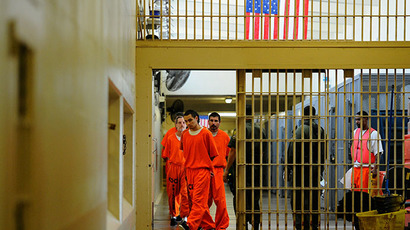Health of California prison hunger-strikers in decline, despite help from Gatorade

California prisoners on hunger strike to protest solitary confinement policies are losing dangerous amounts of weight, even though they have been allowed to drink sports drinks and eat vitamins to help protect against starvation.
The hunger strike is approaching the end of its second month, with 123 inmates across 30 prisons refusing food. Fifteen of the 123 inmates have lost dangerous amounts of weight, while nearly all others have experienced feelings of weakness and low body temperature, Liz Gransee, a spokeswoman for the officer in charge of prison healthcare told Reuters Friday.
“Some of them aren’t handling this as well as the others,” she said. “Some of them have had IV fluids multiple times.”
Forty-one inmates have consistently refused food since the strike began on July 8, with others joining and leaving the strike intermittently.
Many have subsisted on vitamins and sports drinks, including Gatorade, a popular sports drink in the US that replenishes electrolytes and can provide inmates with 625 calories each day, slowing the progress of a prisoners’ starvation.
The average 30-year-old man must consume between 2400 and 2600 calories every day, part of the reason Gatorade will not be enough to save an individual’s life, Elena Kret-Sudjian the medical director of clinical nutrition at the University of California Davis Medical Center, told Reuters.
“When the body burns fat it also burns the muscle and it’s very dangerous. When humans lose 40 percent of muscle they will die,” Kret-Sudjian said. “People may feel initially very irritable, even depressed. They may have reduced body temperature, be extremely sensitive to cold, or have chronic diarrhoea, decreased sex drive and other complications.”
This strike is the second in California in just a few years. At its peak, 30,000 inmates throughout the state were involved in the demonstration against solitary confinement policies that isolate gang leaders indefinitely, sometimes for decades.
Earlier this month a federal judge granted the California Department of Corrections permission to begin force-feeding inmates who appeared to be on the verge of death. The so-called “refeeding” process involves feeding prisoners intravenous fluids through their noses and into their stomachs. Judge Henderson instructed officials to act only if the chief medical executive at a facility determines a hunger striker is at risk of “near-term death or great bodily injury.”
Both prison officials and attorneys representing the remaining demonstrators claim they are willing to compromise. Lawmakers say the effort is fueled by gang leaders seeking more power behind bars, while inmates’ attorneys have repeatedly told the media they are seeking a compromise to benefit both parties.
“Being rational seems to have left this debate,” Jeanne
Woodford, former head of the California prison system under
Governor Arnold Schwarzenegger, told the Los Angeles Times.
“It’s people who have dug their heels in on both sides.”














